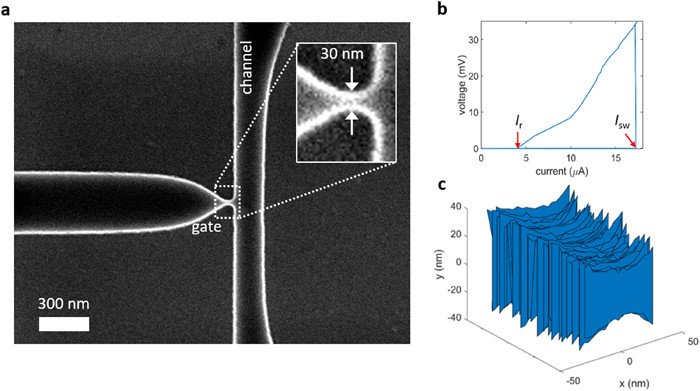Superconducting nanowire-based devices are increasingly being used in complex circuits for applications such as photon detection and amplification. To keep up with the growing circuit complexity, nanowire processing is moving from single layer fabrication to heterogeneous multilayer processes. Hydrogen silsesquioxane (HSQ) is the most common choice of negative-tone electron-beam resist for patterning superconducting nanowires. However, HSQ has several limitations, including an inability to be removed without a strong reagent that damages the superconducting film, making it unsuitable for multilayer fabrication. As a result, it is vital to consider alternative resists that can be removed through less harmful solvents. Here, the authors explore the use of ma-N 2400 series deep ultraviolet photoresist as an electron-beam resist for fabricating superconducting nanowire devices. They demonstrate that ma-N can be used to pattern dense lines as narrow as 30 nm and isolated features below 20 nm in width. They also examine the reproducibility of 36 identical superconducting devices by comparing their minimum dimensions and switching currents. Through this analysis, they conclude that ma-N 2400 is a suitable electron-beam resist for fabricating nanoscale devices and has the potential to expand the use of nanowire-based technologies into more advanced applications.
A complete description of the work may be found here.

